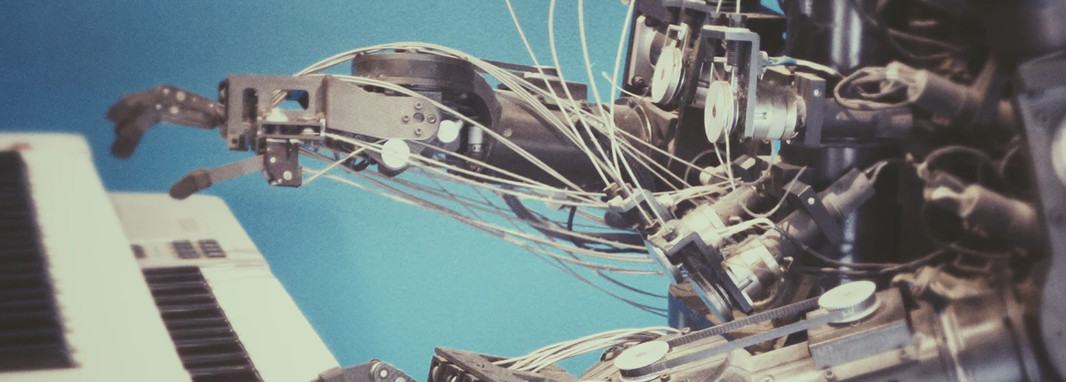Artificial intelligence and the Internet of Things are taking over the technology world. Regardless of what field the technologies are applied in, integrating AI into IoT is becoming a common practice in business. Gartner predicts that 65% of enterprises will adopt IoT products by 2024.
IoT and AI fusion allow organizations to innovate with data in ways we never thought possible and drive human progress in every aspect of life. Smart cars are becoming autonomous. Remote telemedicine is breaking down barriers in healthcare. Communities all over the world are converting to "smart cities". Let’s see how that goes in detail.
IoT solves the problem of digitizing the physical world and turning physical attributes into digital bits and bytes. AI helps to make sense of large data amounts and to turn this data into actions. Still, the marvels of AI and IoT hardly stop there.
What's behind IoT and AI surge?
We can see that IoT technology is no longer hypothetical; much of it is already operational. The Internet of Things allows businesses to generate new products, open new distribution channels, and extend their roles to include prediction, prevention, and assistance.
Required preconditions for IoT technology to take off are already in place: data is ubiquitous, computing power is rapidly developing, and connectivity technology is steadily maturing and becoming standardized.
We Provide AI-Powered Solutions from Concept to Launch.
The number of associated IoT devices grows: from 9.5 billion to the end of 2019; it is now expected to reach 28 billion by 2025. These numbers of connected IoT devices do not include laptops, smartphones, tablets, or similar.
IoT is solving real-world problems - saving energy, traffic regulation, emergency medical services, and security management. IoT "things" are embedded with technologies, software, or sensors are transforming factories, healthcare, transportation, distribution centers, and farms.
What AI teaches IOT?
The Internet of things implies handling the massive amount of smart connected products online. Each of the devices produces large volumes of data. The AI component makes sense of this endless sea of data streamed in from these devices before it can be put to work.
In other words, AI grants IoT superpowers. It makes the experiences truly meaningful for users with the insights artificial intelligence provide.
Companies are incorporating AI, particularly machine learning, into their IoT applications to make highly informed decisions.
AI technology creates the ability to automatically identify patterns and detect deviations in the data that smart sensors and devices generate, such as temperature, pressure, humidity, sound, and vibration.
While traditional business intelligence tools can track numeric thresholds, AI programs make operational predictions quickly and accurately. Besides, speech recognition and computer vision extract insight from data that usually require human review.
Thus, AI applications for IoT enable businesses to avoid downtime, increase efficiency, produce new products, and enhance risk management. By the way, check our AI languages.
How to use AI IoT for my business growth?
As IoT efforts mature within enterprises, more significant benefits are realized. The intelligence and insights available through IoT systems enable businesses to expand their horizons and explore new paths not possible before.
Many of them have already unlocked AI and IoT as part of their business intelligence. According to Accenture, AI can boost business output by up to 40%. Here are some suggestions on how to leverage IoT and AI:
- Companies can achieve better user experience and design new business models. For factories, robotics employed manufacturing are getting smarter with the support of embedded sensors, facilitating data transmission. With the help of artificial intelligence algorithms, robots can learn from newer data. Apart from that, in retail analytics, data gathered from cameras and sensors can promote dynamic staffing levels and reduce the checkout time.
- AI and machine learning make live-streaming analytics possible. Artificial intelligence helps businesses to make sense of the massive clouds of information they possess. It enables better target segmentation and a broader understanding of customer bases. Moreover, a company can't have predictive analytics without a live, dynamic stream of data. Now organizations can respond to various events even before they happen.
- AI in IoT enhances business operational efficiency. When production equipment, inventory, supply chain, maintenance, quality, and business operations are connected, the system becomes even more efficient. With IoT application, functional areas outside of production extended their support role and started to improve efficiency directly.
- Businesses can discover new IoT revenue streams through wide-scale, intelligent solutions. They can improve productivity by freeing up resources, which can then be invested in other business areas.
Like those businesses, with our AI development services, you will be able to identify the optimal AI solution to gather the necessary real-time data, convert it into knowledge, and ultimately drive business productivity and efficiency.
Technologies like MQTT React, which combines the MQTT protocol with the React JavaScript library, can be leveraged to build efficient and scalable web applications for monitoring and controlling IoT devices.
IoT hands-on examples
Paul Bevan, IT Infrastructure research director at Bloor, pointed in his interview to ZDNet:
"The ability to capture data from remote sensors, transfer it to large data centers, and apply both AI and machine learning and data science techniques to it for real-time analysis is where enterprises are likely to see the biggest early gains".
Let's see how businesses apply AI to IoT:
- Google put an AI in charge of keeping its data centers cool. They replaced human staff with the AI system. It directly controls cooling in the data centers that run services, including Google Search, Gmail, and YouTube.
- Walmart is using facial recognition systems and IoT tags to improve retail. Walmart uses facial recognition and behavioral analysis technologies to analyze customers' behavior while shopping. They can also skip the line to pay using the app instead.
- Shell saves millions of dollars by tapping the power of IoT and Artificial Intelligence to monitor oil fields. The sensors are used to provide pipeline surveillance to remote infrastructure in the Niger Delta.
- Rolls-Royce partners with an AI company to support its aero-fleet engines. They extract IoT sensor data from engines and health-monitoring systems to combine those records for the individuals who develop and use an engine.
We Provide AI-Powered Solutions from Concept to Launch.





